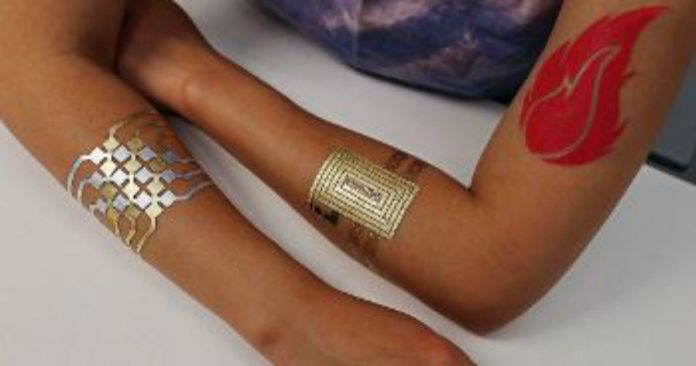
Earlier this week, a group of MIT researchers in collaboration with Microsoft Research unveiled to the world the latest advancements in wearable technology: a temporary tattoo that allows the carrier to control his or her device.
Cindy Hsin-Liu Kao is the Ph.D. student heading the “DuoSkin” project at the MIT Media Lab, with help from Andres Calvo and Chris Schmandt of MIT, and Asta Roseway, Christian Holz, and Paul Johns from Microsoft Research.
Just a couple of weeks back, a different research team at the MIT Media Lab revealed the Interactive Dynamic Video technology, a cheap and revolutionary way to capture and analyze data from images. Now, the announcement of “DuoSkin” seems further to focus the path of the division on impactful, accessible, and attractive approaches to cutting-edge technology.
“DuoSkin” is more than just a tattoo
The fact is that “DuoSkin” is the name of the whole project and process, the tattoo just happens to be the physical vehicle for it. Cindy Hsin-Liu Kao, a Taiwan native, explains on a video how in her homeland “flash tattoos” are a highly popular and cheap way to express yourself, and how she wanted to capture that same essence to make a real breakthrough in wearable technologies.
With this in mind, the “DuoSkin” technology relies on any graphic design software to create the tattoo, a regular printer to print the design on tattoo paper, a vinyl cutter to cut it out, and then gold leaf film to trace the tattoo once again for the final product. The user just haves to apply the metallic-looking design onto their skin like they would do with any other temporary tattoo: just a gentle rub and some damp cloth to turn your skin into a computer interface.
A stylish way to control, display and communicate
“DuoSkin” is not limited to just one use, but rather the research team has devised three potential primary purposes for the wearable technology.
The first is to use the tattoos as input devices to control elements on your device or computer. Using “DuoSkin”, you could use your tattoo as a trackpad or functional buttons to navigate or control applications like a music player or just browse online.
The second one is outward-focused as it showcases a change in color depending on body temperature. These designs allow for more creativity as they can be used to express moods, or even potentially have medical applications. The final one is oriented towards communication, as the tattoos not only can read data but contain it using a customizable NFC chip within the same gold leaf-coated design.
Cindy Hsin-Liu Kao and her team have published a paper that they will present officially along with the “DuoSkin” technology at the International Symposium on Wearable Computers next month in Heidelberg, Germany.
Source: MIT










